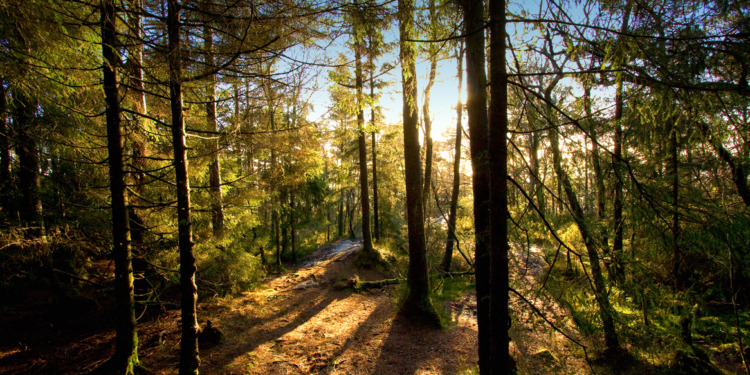Seven out of 10 young people in the UK are deeply worried about the environment, a new YouGov poll has revealed. The survey was conducted among 2,133 adults, of which 226 were aged 16-24. The figures have been weighted to be representative of the entire British population.
Climate anxiety is a sense of fear or worry caused by the climate crisis and the increasing urgency to turn things around. For years, scientists and activists have been warning us of our impact on the planet and Gen Z – who have been raised alongside reports of increasingly frequent and increasingly intense climate-enhanced weather events – are seemingly most affected..
However, nature and being outdoors in green spaces seems to be an antidote as the majority of people of all ages say the natural world and places of physical beauty have a positive impact on their mental health.
Elyse White, 22, forest engagement and environment assistant at the Woodland Trust says being close to nature at the Trust’s Young People’s Forest has had “a monumental impact on her life.”
“I suffer from anxiety but the Young People’s Forest has contributed massively towards the transformation of my confidence,” she added. “I turned to the environment and nature for comfort and distraction; this habit led to a life-changing therapy.”
Despite this incredibly simple solution, woodland is declining across all of Europe with the UK having the lowest tree coverage on the continent, according to Dr Darren Moorcroft, chief executive of the Woodland Trust.
“We know that being outdoors and among nature has a positive effect on mental health – but the level of access to green space in the UK is simply not good enough,” says Moorcroft.
“Drastically low” levels of green spaces
The Woodland Trust’s most recent woodland and trees report found only 13% of the UK is still woodland, and only 7% is considered to be in good ecological conditions compared to the European average tree cover of 37%.
Whilst UK tree coverage is increasing, “we need to at least quadruple the current rate of woodland creation and increase the proportion of UK-grown native species to help tackle the effects of climate change and give nature a fighting chance of recovery,” says the report.
One way to do this, as stated in the report, is protecting trees and enhancing the green spaces we already have, and when only 16% of UK residents live within 500 metres of a green space, it is essential that these protections also be extended to trees in urban areas.
Related articles: How 12 Years of War Destroyed Syria’s Forests, How Urban Green Spaces are Impacting on China’s Environmental and Public Health, Green Ideas On Your Outdoor Spaces, Scaling up Nature-Based Infrastructure for People and Planet.
Earlier this month, over 100 mature trees were felled in Plymouth, a city on the South-West coast of England, despite opposition from local people and activist groups. Over 16,000 residents signed a petition asking the council to incorporate them into the proposed urban development plan but only 15 were saved.
The true extent of the environmental vandalism by #Plymouth’s Conservative council is now visible in our city centre. Over 100 trees felled overnight. This was the last green part of a very urban city centre and now looks like part of the Amazon after deforestation. pic.twitter.com/88uLKmqbQN
— Luke Pollard MP (@LukePollard) March 16, 2023
The Woodland Trust calls for better management of green spaces by protecting ancient trees in particular, saying they should receive the same care as heritage buildings and sites of cultural significance. The current measures are below standard, trees are often only protected when they fall within an existing heritage site, or when they have “amenity value.”
Young people at the forefront
Because young people seem to be the most affected by climate anxiety, they are the most passionate about defending green spaces. In the survey, three quarters of respondents aged 16 to 24 said they already have or would be willing to plant their own tree.
Of the 55 million trees planted by the Woodland Trust since 1972, young people and children are responsible for eight million.
“There is hope but we need to take drastic action. Woodland cover in the UK is desperately low and we want to see it increased to at least 19% by 2050,” says Dr Moorcroft. “Trees and woods are integral to tackling both the nature and climate crises, but many young people miss out on both the physical and mental health benefits of being among nature.”
Editor’s Note: The opinions expressed here by the authors are their own, not those of Impakter.com — In the Featured Photo: A forest. Featured Photo Credit: TimOve.










